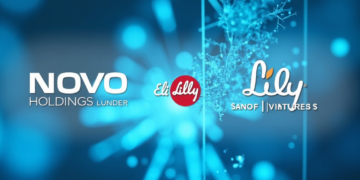New York startup funding 2025 is shaping up to be an intriguing year, marked by a mix of significant exits and a slower pace in securing new investments. With the announcement of Google’s $32 billion acquisition of Wiz, a New York-based cybersecurity firm, there’s no denying the potential for substantial returns in the region’s burgeoning tech scene. However, early indicators reveal that total venture capital and seed funding in New York has dipped to around $3 billion, making it the lowest quarterly total in recent memory. As the second-largest venture capital hub after the San Francisco Bay Area, New York’s investment landscape continues to attract attention despite these fluctuations. Stakeholders are closely watching how 2025 startup investments evolve, and whether the momentum from notable acquisitions can help fuel renewed interest in startup funding in New York.
As we dive into the current landscape of entrepreneurial financing, it is essential to explore the dynamics of investment flows within the Big Apple. The realm of startup financing, particularly in the New York metro area, is witnessing a complex interplay of high-profile exits and a temperate environment for new capital infusion. While 2025 is off to a slow kick regarding the inflow of seed funding in New York, the city remains a bustling hub for business innovation and venture activity. Notable companies are stepping into the spotlight with hefty valuations and acquisitions that showcase the area’s potential. These developments could serve as a bellwether for future capital allocations and entrepreneurial growth as the year unfolds.
New York Startup Funding Trends for 2025
As we delve into 2025, the year has presented a mixed bag for New York startup funding. Initial reports indicate that funding amounts have dipped, with investment figures around $3 billion, which is a stark contrast to previous highs. This downturn raises questions about the overall investment landscape for startups in the region. While exits like Google’s acquisition of Wiz suggest a strong potential for liquidity, the initial funding metrics highlight a cautionary atmosphere among investors, resulting in tighter purse strings for new ventures.
Historically, New York has been a powerhouse for startup funding, ranking just behind the San Francisco Bay Area. However, the trends seen in early 2025 may signal a potential shift in strategy for venture capitalists. The focus could pivot towards quality over quantity, emphasizing strategic investments in companies with solid prospects rather than a broader approach that characterized the funding peaks of earlier years. Understanding these trends is crucial for entrepreneurs seeking seed funding New York, as they navigate a more competitive and cautious funding environment.
Top Investment Rounds in New York Startups
Despite the slow start in 2025 for overall venture capital, there have been notable funding events that suggest pockets of potential within the New York startup ecosystem. For instance, ElevenLabs raised an impressive $180 million in its Series C funding, backed by renowned investors such as Andreessen Horowitz. This round underscores the continued interest in innovative technology solutions, particularly in artificial intelligence and machine learning. It highlights how even amidst a downturn, successful companies can still attract significant investments if their business models align with investor interests.
Additionally, the funding secured by Chestnut Carbon indicates a shift towards sustainability in investment priorities. The $160 million Series B funding the company received not only showcases the demand for carbon credit solutions but also reflects a growing commitment among investors to support environmentally-focused startups. This trend may pave the way for more green startups to receive funding, carving a niche within the broader New York startup funding landscape, especially as societal focus intensifies on environmental issues.
Impact of Startup Exits on 2025 Funding
The landscape of startup funding in New York can often be influenced significantly by the number of exits within the market. As observed in early 2025, the planned IPO of CoreWeave and Google’s acquisition of Wiz highlight a shift towards liquidity events that might redirect investor focus and capital away from new funding rounds. While these exits can seem detrimental to the vibrancy of the startup scene at first glance, they may also indicate a healthy ecosystem where strong companies can transition successfully into the public domain.
Such exits can lead to a rejuvenated interest in early-stage startups, as successful companies can generate capital that re-enters the funding pool in various forms. Investors who have realized profits from these exits may be more inclined to reinvest into up-and-coming ventures, thereby potentially stimulating the seed funding New York requires to bolster its startup ecosystem. Therefore, while the immediate perspective of startup funding appears slow, the long-term outlook could also harbinger renewed vigor in the funding atmosphere as the year progresses.
Navigating Seed Funding in New York
For aspiring entrepreneurs seeking seed funding New York in 2025, understanding the current market dynamics is essential. The dip in funding levels this year suggests that startups may need to refine their pitches and clearly articulate their value proposition to stand out. Investors are likely looking for companies that can demonstrate both innovation and a solid route to profitability amid the emerging economic hesitations. Therefore, softening pitches with strong data and market validation is key for startups to capture the attention of potential backers.
Moreover, the focus on specific industries such as AI and sustainability could present unique opportunities for startups within those sectors. Those companies might find it easier to forge connections with venture capital firms that have prioritized these areas for their 2025 investment strategies. By targeting the right investors and showcasing a robust business plan, startups can not only survive the initial slow funding period but thrive and contribute to the vibrant ecosystem New York is known for.
Future Outlook for New York Venture Capital
Looking ahead, the future of New York venture capital in 2025 will heavily depend on the strategic reactions of both startups and investors in light of the earlier funding struggles. A key determinant will be whether the exits and successful IPOs seen this year can invigorate investment confidence among venture capitalists. If successful companies can continue to scale, this could lead to an influx of capital directed toward new investments, fostering innovation and expansion in the New York startup scene.
Additionally, as established industries and emerging ideas collide, novel investment opportunities could arise that align with socio-economic trends. Emphasis on technology, sustainability, and healthcare startups is likely to grow, attracting investments that resonate with changing consumer preferences and environmental needs. For investors, this means a chance to engage with startups that not only promise financial returns but also address pressing societal challenges. The resulting synergy could define New York’s venture capital trajectory well into the future.
The Influence of Major Acquisitions on Startup Ecosystem
The announcement of large acquisitions, particularly such significant ones as Wiz being purchased by Google, reverberates through the entire New York startup ecosystem. Such events not only provide a prime example of successful exits but also serve as a benchmark for valuation and investor sentiment, shaping how other startups are viewed in the eyes of potential funders. High-profile acquisitions can effectively raise the profile of an entire sector, leading investors to reconsider their funding strategies in favor of emerging businesses operating within the same domain.
Additionally, the narrative surrounding these acquisitions can create a sense of urgency among investors to capitalise before potential opportunities slip away. This phenomenon can lead to a spike in interest in early-stage startups seeking capital, as investors rush to identify the next ‘unicorn’ before the market becomes saturated. Hence, while initial funding levels in 2025 might be lagging, the overall impact of these acquisitions might stimulate a renewed focus on funding, igniting a faster-paced investment climate as the year unfolds.
Strategies for Startups to Attract Funding
In a competitive landscape where startup funding New York appears stagnated in early 2025, having clear strategies for attracting investors is essential. One effective approach is to build a robust narrative around the startup’s vision, mission, and future potential. This means not just sharing what the company does but also why it matters and how it aligns with current market trends. The more emotionally and rationally engaging the pitch, the better the chances of catching the attention of potential funders, especially in a tightened investment climate.
Furthermore, forming alliances with industry leaders and players can lend significant credibility to a startup’s pitch. By aligning with established figures or organizations within the desired funding niche, a startup can leverage that relationship to gain traction in conversations with venture capitalists. Collaboration and partnerships can also facilitate access to networks that might lead to critical funding opportunities and resources necessary for early-stage growth. By implementing such strategies, startups in New York can enhance their prospects in 2025 despite the prevailing funding slowdowns.
The Role of Venture Capital in Startup Growth
Venture capital plays a pivotal role in igniting startup growth within New York’s vibrant ecosystem. It not only provides the capital necessary for product development and market entry but also connects entrepreneurs with invaluable mentorship, resources, and networks. As the startup community continues to evolve in 2025, the role of venture capitalists will become increasingly crucial as they identify promising startups that can drive innovation and economic growth.
Moreover, the rise of specialized venture capital firms focusing on niche markets may lead to improved funding opportunities for certain startups. By honing in on specific sectors — such as AI, sustainability, or healthcare innovation — these firms can offer tailored support that aligns more closely with the startup’s objectives. As interest in these sectors grows, so too does the potential for venture capital involvement, indicating a prevalent trend that could catalyze the next wave of successful startups in New York.
Assessing Risk in New York Startup Investments
In the current funding climate of 2025, evaluating the risk associated with startup investments in New York has become paramount for venture capitalists. With various metrics and market conditions influencing investment decisions, it is crucial for investors to perform thorough due diligence on potential fundraising opportunities. This involves not only analyzing the startup’s financials and growth trajectory but also considering external factors such as market competition and economic conditions.
Investors should also be aware of the potential impact of startup exits on their portfolios. While a decline in the number of new funding rounds may indicate a cooling market, it can also signal a strategic move towards focusing on more promising investments. By recognizing the evolving dynamics of startup funding and adjusting their investment strategies accordingly, investors can better navigate the 2025 landscape and mitigate the associated risks of backing nascent ventures.
Frequently Asked Questions
What is the current state of New York startup funding in 2025?
As of March 2025, startup funding in New York has started slowly, with approximately $3 billion raised in seed and venture funding. This marks the lowest total in five quarters. Despite this, New York remains the second largest venture capital hub in the U.S., trailing only the San Francisco Bay Area.
How has the 2025 startup investments landscape changed compared to previous years?
In 2025, startup investments in New York are notably lower than the peak levels observed in 2021. Despite a slow start, there are still significant rounds of funding, indicating that while overall funding may be down, there is potential growth in specific sectors.
What notable venture capital activities are happening in New York in 2025?
In 2025, notable venture capital activities in New York include major funding rounds like the $180 million Series C secured by ElevenLabs and the $160 million Series B funding for Chestnut Carbon. These examples demonstrate that despite a slow funding environment, substantial investments are still being made.
What are the implications of startup exits in New York for 2025 funding?
The recent acquisition of Wiz by Google for $32 billion highlights that while some startups are exiting, it can potentially lead to a decline in overall startup funding. However, these exits also signify strong market performance, indicating a healthy ecosystem for future investments in New York.
How does New York’s seed funding in 2025 compare to other regions?
While overall seed funding in New York is lower in 2025, it consistently ranks as a leading region for startup investments. The area continues to attract significant venture capital despite challenges, making it a prime location for startup funding opportunities.
What future trends can we expect for New York venture capital through 2025?
Future trends for New York venture capital in 2025 suggest a gradual recovery as the year progresses. Continued interest in early-stage startups and high-profile exits may signal increasing funding activity as more companies seek follow-on investments.
Which sectors are attracting the most startup funding in New York in 2025?
In 2025, sectors such as artificial intelligence and sustainability are attracting significant startup funding in New York. Companies like ElevenLabs and Chestnut Carbon have demonstrated strong investment interest, reflecting a trend towards innovation and environmental solutions.
How do recent startup exits affect new investments in New York in 2025?
Recent startup exits can create a ripple effect in the investment landscape. As established companies like Wiz and CoreWeave exit through IPOs or acquisitions, it can lead to a temporary decline in new investments, but it also clears the path for emerging companies in New York to attract attention and funding.
What resources are available for tracking New York startup funding developments in 2025?
To stay updated on New York startup funding developments in 2025, resources such as Crunchbase Pro provide insights into recent funding rounds, acquisitions, and investment trends, allowing investors and entrepreneurs to keep a pulse on the market.
Are more New York startups likely to achieve follow-on funding in 2025?
While 2025 has started slowly for startup funding, there is hope that as the year progresses, the pipeline of early-stage startups in New York will lead to increased follow-on funding opportunities as investors seek to support promising ventures.
| Key Points |
|---|
| In 2025, New York startup funding begins slow with $3 billion raised, the lowest in five quarters. |
| Acquisitions like Google buying Wiz for $32 billion indicate growth potential despite funding slowdown. |
| Significant rounds include ElevenLabs’ $180 million and Chestnut Carbon’s $160 million in funding. |
| New York remains the second-largest venture capital hub, trailing San Francisco. |
| Despite a slow start, early-stage startups still need follow-on funding as the year progresses. |
Summary
New York startup funding 2025 is off to a sluggish beginning, with only $3 billion raised so far, indicating the lowest funding totals in the last five quarters. While the funding landscape is less vibrant compared to previous years, particularly the peak of 2021, significant acquisitions and IPOs highlight a robust exit strategy. Companies like Wiz and CoreWeave are leading the charge, potentially shaping the future of the New York startup ecosystem. Nonetheless, as the year unfolds, it’s crucial for early-stage startups to secure follow-on funding to sustain growth and innovation in this competitive landscape.












